Name Eugenio Granell | Role Artist | |
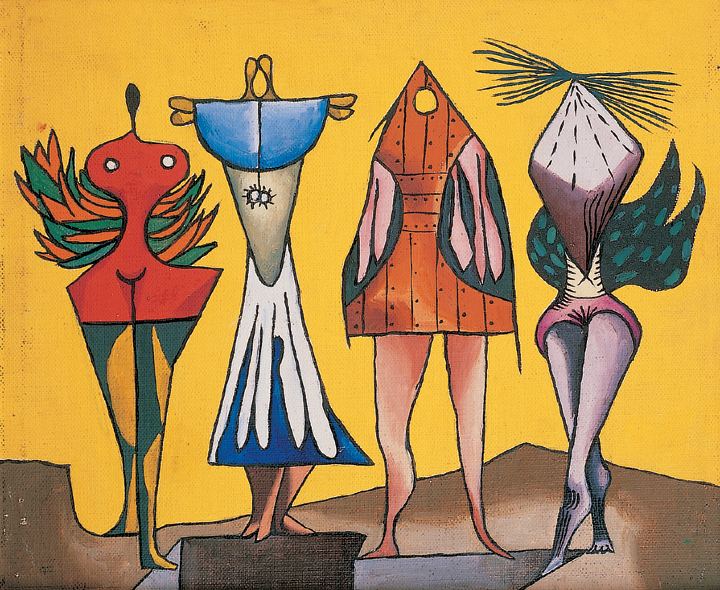 | ||
Died October 24, 2001, Madrid, Spain Books Picasso's Guernica: The End of a Spanish Era, Art colectors [sic] : Eugenio Granell in collections in Galicia | ||
A vida surrealista de eugenio granell en cartafol tvg 1989
Eugenio Fernández Granell (28 November 1912 – 24 October 2001) was an artist often described as the last Spanish Surrealist painter.
Contents
- A vida surrealista de eugenio granell en cartafol tvg 1989
- Invierno eugenio granell
- Early life in Spain
- The Dominican Republic
- Guatemala and Puerto Rico
- New York
- Return to Spain
- Granells work
- English translated works
- References

Invierno eugenio granell
Early life in Spain
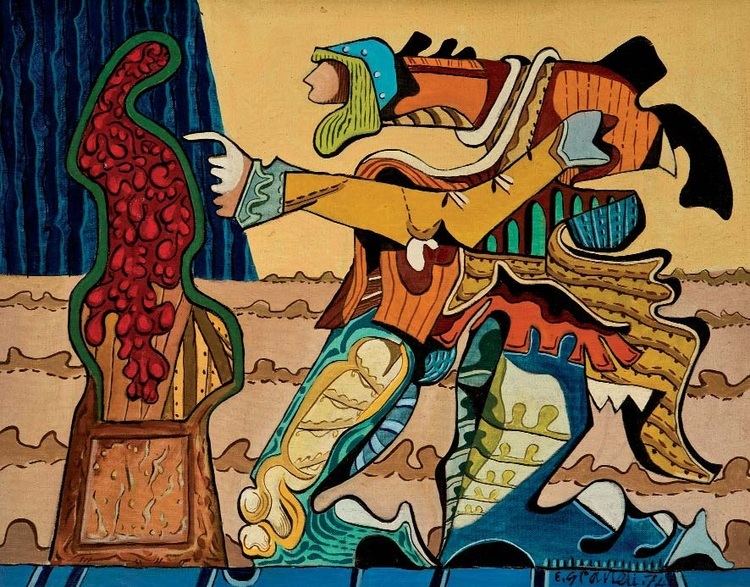
Born in A Coruña in the autonomous community of Galicia, Eugenio Fernández Granell started out as a political radical and a musician. In 1927 he set up the magazine SIR (Sociedad Infantil Revolucionaria) with his brother Mario, and in 1928 enrolled at the Escuela Superior de Música del Real Conservatorio in Madrid. Among his friends were Maruja Mallo, Joaquín Torres García, Alberto Sánchez Wifredo Lam and Ricardo Baroja. A member of the POUM (Workers’ Party for Marxist Unification) during the Civil War, he contributed actively to newspapers such as La Nueva Era, La Batalla and El Combatiente Rojo.
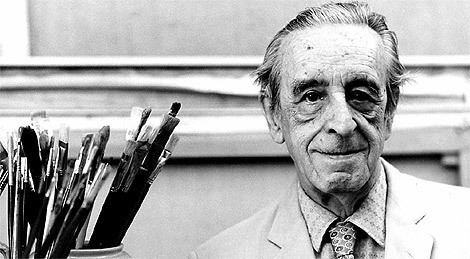
In 1939, he went into exile. After arriving in France, he was held in internment camps for several months, but was eventually able to escape to Paris. While in the French capital, he continued the friendships with Benjamin Péret and Wifredo Lam which had started in Madrid before the civil war. His affiliation with Trotsky made him the enemy of fascists and Stalinists and steered him towards a life marked by changes of residence. As María Zambrano said, during the first half of the twentieth century, Spain was a “master of dispersal and wastefulness” as it forced many of its most outstanding artists and intellectuals into a painful flight to other countries. Granell was one of those exiles, residing in France, the Dominican Republic, Puerto Rico, Guatemala and New York City. In the Dominican Republic, he was in the company of other Spanish exiles, including artists José Vela Zanetti, José Vela Zanetti and Josep Gausachs. And writers like Vlady Serge, Segundo Derrano Poncela, Vicente Llorens.
The Dominican Republic

When Granell arrived in the Dominican Republic in 1940, he had not yet discovered his talent for painting. Initially he worked as a violinist with the National Symphony Orchestra, which he helped organize with the musician Casal Chapí, and as a journalist for the newspaper La Nación. In 1941 he began painting and in 1942 he participated in an exhibit entitled Private Exhibit of Modern Spanish Painters. Granell had his first solo exhibition in 1943, exhibiting 44 Surrealist paintings. This was the first exhibition of Surrealist works held in the country. Granell created, along with poets from the Dominican Republic, and the Chilean diplomat Alberto Baeza Flores the much lauded magazine "La Poesía Sorpendida". He had another solo exhibition in 1945 featuring 200 works. In 1946 he exhibited in Puerto Rico and Guatemala. Later that same year, he left the Dominican Republic due to problems that arose when he refused to sign a document supporting the dictator Trujillo.
Guatemala and Puerto Rico
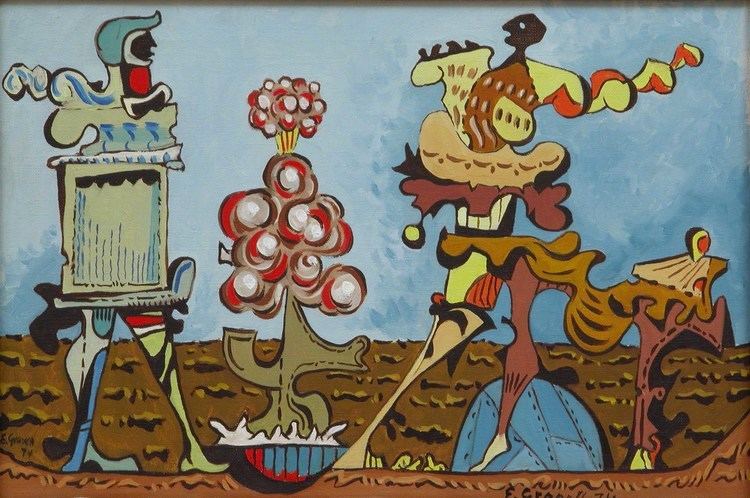
In 1946, Granell left the Dominican Republic for Mexico where he was going to work with his party comrade Costa Amic. But landing in Guatemala, Eugenio and his wife Amparo liked Guatemala City and decided to stay. Once there, he became an art professor, contributed in magazines and had a radio show in which t=he talked about art and artists, among other subjects. He also continued his painting and writing. His stay in Guatemala was cut short when the revolution began and he was seen as an anti communist. Jaime Benítez, the Rector of the University of Puerto Rico, had met Granell when he had shown his art in that island a few years earlier, invited him and his family to move to Puerto Riuco and become an art professor at the University. His stay in the island was much productive. He ignited interest in contemporary art in his students. many continued to paint and at some point had created a group called "El Mirador Azul". Some of these are: Juan Maisonet, Rafael Ferrer, Frances del valle, Rosado, Cosette Zeno, the poet "El Boquio". As he did in the Dominican Republic, Granell left a school of art and thought in this island.
New York
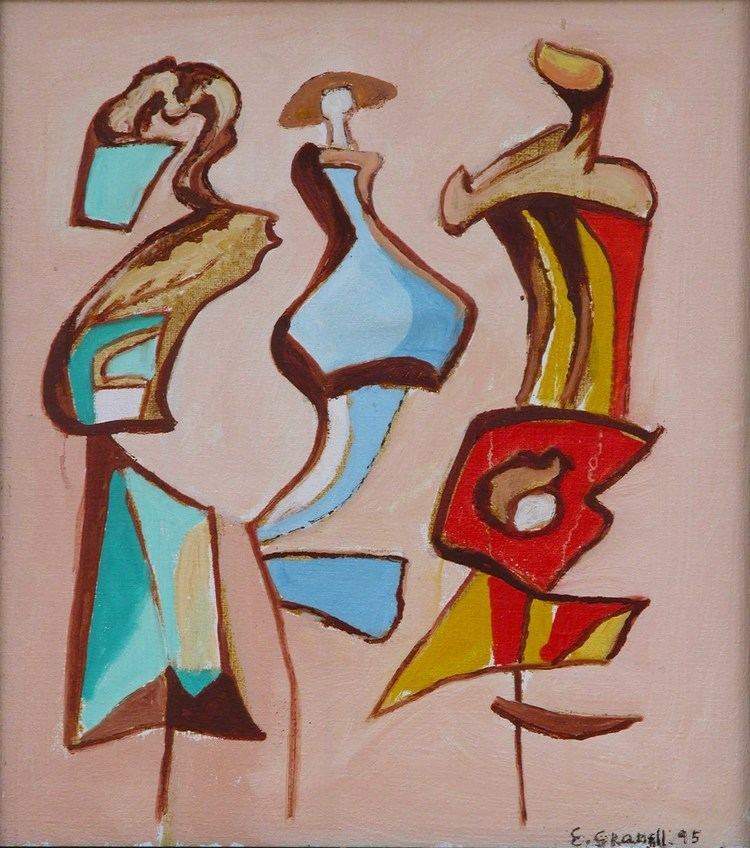
In 1952, Granell traveled to New York with his friend José Vela Zanetti, a fellow Spanish exile whom he met in the Dominican Republic. Once there, through Vela Zanetti, he met and developed a strong friendship with Marcel Duchamp. In 1957, after a sabbatical, Granell and his family moved to New York and lived mainly on the Upper West Side of Manhattan, New York, until 1985 when the Granell's returned to Spain. He had several exhibits at the Bodley Gallery, some were individual, others were collective with surrealists like Magritte, Max Ernst, Duchamp. He studied Sociology at the New Scholl for Social Research and earned his PhD with the publication of a very personal study of Picasso`s Guernica: "Picasso's Guernica. The End of a Spanish Era" (UMI Research Press, 1967 and 1981). Granell was Professor Emeritus of Spanish Literature at City University of New York (CUNY).
Return to Spain
In 1985 Granell returned to Spain, where he was awarded numerous prizes and recognitions. The Fundación Eugenio Granell was created in 1995 in his home town Santiago de Compostela, Galicia, Spain. The only museum in the world entirely devoted to surrealism, it holds some 600 of his paintings along with works by Picabia, Duchamp, Man Ray, Miró, Esteban Francés, and many other surrealist artists. Granell published several books, most of them in Spanish including "La novela del Indio Tupinamba", a surrealist, personal and unique vision of the Spanish Civil War. It is presently being translated and will soon be published by City Lights. Another important publication is "Isla cofre mítico", dedicated to André Breton and his wife Elise whom he had met in the Dominican Republic in 1941. This was a lasting friendship. He died in Madrid in 2001.
His personal archive is located in the Pavelló de la República CRAI Library - University of Barcelona. It consists of press clippings about Spanish Civil War, Exile, Francoism, POUM, and cultural activities.
Granell's work
Although springing from the depths of his subconscious like that of all the surrealists, Granell’s work is influenced by the places where he lived, particularly the exuberance of the Caribbean and the blend of Spanish and native cultures. Surrealism recognises no social function of art other than that of liberating the individual and society from the repression of reason, allowing the creator to express his instincts and dreams. In 1959, André Breton organized an exhibit called The Homage to Surrealism Exhibition to celebrate the Fortieth Anniversary of Surrealism which exhibited works by Salvador Dalí, Joan Miró, Enrique Tábara and Eugenio Granell.
There is absolutely no censorship in Granell’s work. Poetry blossoms, shrouding unrecognisable figures where trees, animals and people merge into hybrid beings that undergo constant metamorphosis. Works where the strong colours are framed in sculptural compositions, in human figures on the verge of formal delirium, or in voluptuous compositions that appear to be a microscopic dimension of an unknown world. Playfulness, advocated by the surrealists as an expression of freedom, pervades the whole of this artist’s work. Granell’s dialogue and writing have always ironically mocked solemnity and reason itself. Such are his painting, his sculpture and his readymades: an extremely beautiful elegy to freedom and the purity of feelings.
The major books on Granell and his work, such as monographs and catalogues, are mostly in Spanish or Galician, but they are widely available in libraries throughout the world, including the United States. All of the catalogues of Granell's exhibits published by the Fundación Granell, are also written in English. Granell also published a book of meditations and critical reflections on Picasso's Guernica, and this book is available in English as well as in Spanish and Galician (see "References" section).
Works by Granell are on display in major museums, including the Museum of Modern Art in New York and the Reina Sofía Museum in Madrid.
